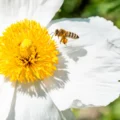A new study published in Science reveals that plant-derived secondary organic aerosols (SOAs) can act as mediators of plant-plant interactions. This research was conducted through the cooperation of chemical ecologists, plant ecophysiologists and atmospheric physicists at the University of Eastern Finland.
It is well known that plants release volatile organic compounds (VOCs) into the atmosphere when damaged by herbivores. These VOCs play a crucial role in plant-plant interactions, whereby undamaged plants may detect warning signals from their damaged neighbours and prepare their defences. “Reactive plant VOCs undergo oxidative chemical reactions, resulting in the formation of secondary organic aerosols (SOAs). We wondered whether the ecological functions mediated by VOCs persist after they are oxidated to form SOAs,” said Dr. Hao Yu, formerly a PhD student at UEF, but now at the University of Bern.
The study showed that Scots pine seedlings, when damaged by large pine weevils, release VOCs that activate defences in nearby plants of the same species. Interestingly, the biological activity persisted after VOCs were oxidized to form SOAs. The results indicated that the elemental composition and quantity of SOAs likely determines their biological functions.
“A key novelty of the study is the finding that plants adopt subtly different defence strategies when receiving signals as VOCs or as SOAs, yet they exhibit similar degrees of resistance to herbivore feeding,” said Professor James Blande, head of the Environmental Ecology Research Group. This observation opens up the possibility that plants have sophisticated sensing systems that enable them to tailor their defences to information derived from different types of chemical cue.
“Considering the formation rate of SOAs from their precursor VOCs, their longer lifetime compared to VOCs, and the atmospheric air mass transport, we expect that the ecologically effective distance for interactions mediated by SOAs is longer than that for plant interactions mediated by VOCs,” said Professor Annele Virtanen, head of the Aerosol Physics Research Group. This could be interpreted as plants being able to detect cues representing close versus distant threats from herbivores.
The study is expected to open up a whole new complex research area to environmental ecologists and their collaborators, which could lead to new insights on the chemical cues structuring interactions between plants.







No Comments
Leave a comment Cancel